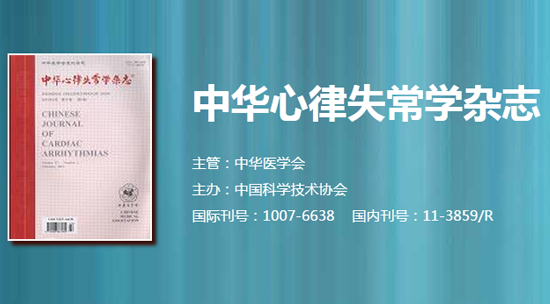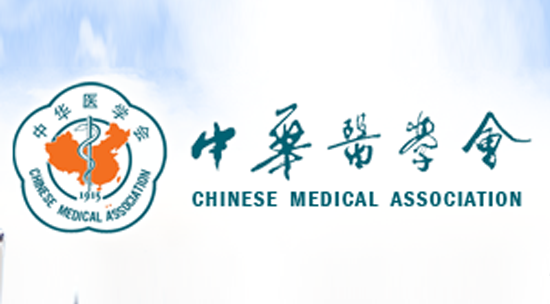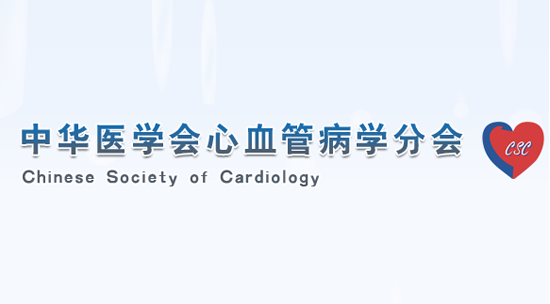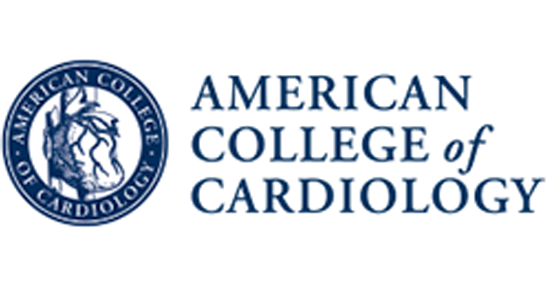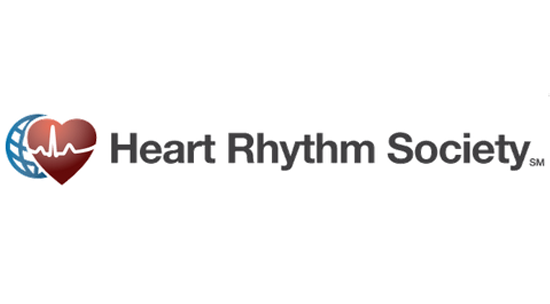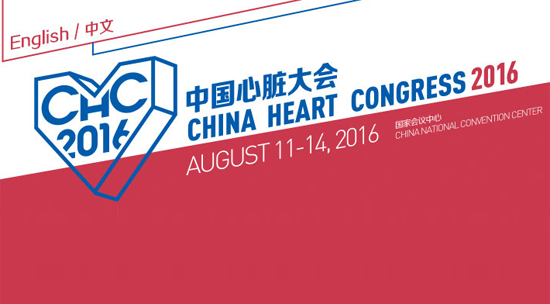HeartRhythm主编—陈鹏生教授语音速递(7月刊 英文版)
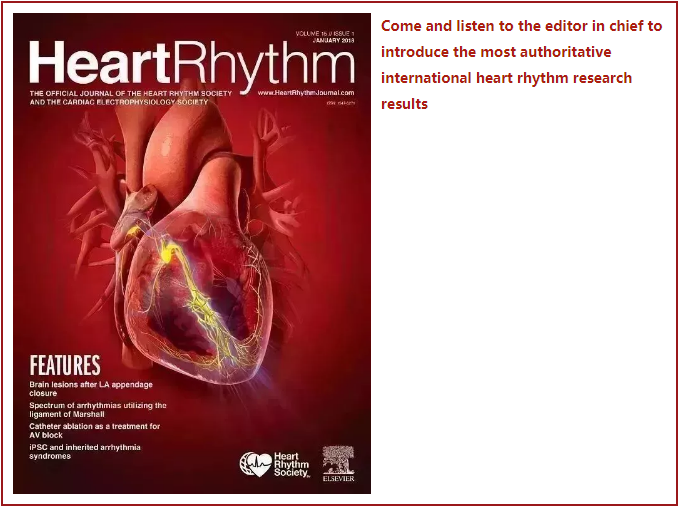

Peng-Sheng Chen
Hello, this is Dr. Peng-Sheng Chen, the Editor-in-Chief of Heart Rhythm. The July issue of the journal is a focus issue on vein of Marshall featuring 3 original articles, one comprehensive review, a Hands-on article and a historical perspective on that anatomical structure.
The first paper is titled “Determinants of outcome impact of Vein of Marshall Ethanol infusion when added to catheter ablation of persistent atrial fibrillation”. The VENUS trial is a trial that randomized 343 patients with persistent AF to catheter ablation combined with vein of Marshall (VOM) ethanol or catheter ablation alone. The primary outcome is freedom from AF or AT after a single procedure. In patients with perimitral block, the primary outcome was reached 54.3% after VOM ethanol infusion plus catheter ablation group and 37% after catheter ablation alone. The outcomes are much better in high volume than in low volume centers. These finding indicate that adding VOM ethanol infusion to catheter ablation has a greater impact on outcomes when associated with perimitral block and performed in high-volume centers. Perimitral block should be part of the VOM procedure.
A second paper is titled “Significance of manifest localized staining during ethanol infusion into the vein of Marshall”. The authors studied 204 patients and analyzed the patterns of staining after VOM ethanol infusion. Staining of atrial myocardium that spread uniformly along the VOM vascular tree was considered normal, in contrast to predominantly localized staining that spread concentrically from a focal point due to vascular injury. Localized staining was observed in 27% of patients. It was not associated with incidence of pericardial effusions, in achieving acute mitral isthmus block or with long term procedural success. The authors conclude that localized staining after VOM ethanol infusion was frequent but was not associated with clinically relevant impact or disadvantages.
A third original article is “The Combination of Coronary Sinus Ostial Atresia/Abnormality and a Small Persistent Left Superior Vena Cava - Opportunity for Left Ventricular Lead Implantation and Unrecognized Source of Thromboembolic Stroke”. The small persistent left superior vena cava is also known as the VOM. The authors report 20 patients with coronary sinus ostial anomalies. Among them, 70% had small persistent left SVC identified by catheter manipulation and contrast injection, and in 30% by levophase CS venography. In 80%, LV lead was implanted down small persistent left SVC and in 20% small persistent left SVC was used to access the coronary sinus from the right atrium. One patient experienced a stroke during implantation. The authors conclude that when coronary sinus ostial anomalies prevent access, small persistent left SVC can be used to successfully implant LV leads.
These above 3 original articles are followed by a contemporary review titled “Vein of Marshall Ethanol Infusion in the Treatment of Atrial Fibrillation. From Concept to Clinical Practice”by Miguel Valderrabano et al, a Hands-on article titled “How to Perform Ethanol Ablation of the Vein of Marshall for Treatment of Atrial Fibrillation” by Hocini et al, and a historical vignette titled “The Ligament of Marshall: A historical perspective” by Benjamin Scherlag.
The next two original articles illustrate the value of newer antidiabetic agents, including glucagon-like peptide-1 receptor agonist [GLP-1RA] and sodium-glucose cotransporter 2 (SGLT2) inhibitor. The first of the two articles is titled “Comparison of the effect of glucoselowering agents on the risk of atrial fibrillation: A network meta-analysis”. The authors searched various databases for studies that reported AF/AFL as clinical end points with a follow-up period of at least 12 months. Five eligible studies consisting of 263,583 patients with type 2 diabetes mellitus were included. Based on the pooled results, GLP1-RA significantly reduced AF/AFL events compared with metformin, sulfonylurea, insulin, and non-sulfonylurea.In conclusion, compared with other glucose-lowering agents, GLP1-RA could reduce the risk of AF/AFL in patients with diabetes.
The second paper is titled “Association of SGLT2 Inhibitors with Arrhythmias and Sudden Cardiac Death in Patients with Type 2 Diabetes or Heart Failure: A Meta-Analysis of 34 Randomized Controlled Trials”. The trials have a total of 63,166 patients Except for 1 study of heart failure, all patients had type 2 diabetes. Follow-up ranged from 24 weeks to 5.7 years. SGLT2 inhibitor therapy was associated with a significant reduction in the risk of incident atrial arrhythmias and the sudden cardiac death compared with control. The authors propose that prospective trials are warranted to confirm the antiarrhythmic effect of SGLT2 inhibitors and determine whether this is a class or drug-specific effect.
The next article is “Arrhythmia-induced cardiomyopathy: a potentially reversible cause of refractory cardiogenic shock requiring veno-arterial Extracorporeal Membrane Oxygenation”. The authors report 35 patients who required venoarterial extracorporeal membrane oxygenation (VA-ECMO) for refractory cardiogenic shock and recent supraventricular arrhythmia. Among them, 77% had atrial fibrillation. Amiodarone and/or electric cardioversion successfully reduced arrhythmia in 12. Among them, 11 had long-term survival without transplantation or long-term assist device. Eight patients underwent ablation procedures were weaned off VA-ECMO; 7 survived. Of the remaining 15 patients without arrhythmia reduction or ablation, only the 6 bridged to heart transplantation or left ventricular (LV) assist device survived. The authors conclude that arrhythmia-induced cardiomyopathy, mainly AFrelated, is an underrecognized cause of refractory cardiogenic shock. VA-ECMO support allowed safe arrhythmia reduction or rate control by AVN ablation while awaiting recovery, even among those with severe LV dilation.
Next up is “Persistent Atrial Fibrillation Ablation in Cardiac Laminopathy: Electrophysiological Findings and Clinical Outcomes.” The study included 3 women and 5 men (mean age 47 ± 14 years). The LA volume was 206 mL. Large low-voltage areas were recorded in all 8 patients. After ablation, early arrhythmia recurrence was recorded in 7 patients (87%). After a mean follow-up of 4.4 years, 4 patients underwent ICD therapy for life-threatening ventricular arrhythmia and 3 patients finally underwent heart transplantation. The authors conclude that patients with persistent AF afflicted by cardiac laminopathy exhibit severe LA impairment because of large low-voltage areas, prolonged conduction velocity, and reduced contractile function. Ablation procedures have a limited effect with a high recurrence rate.
The next paper is “Differentiating atrial tachycardias with centrifugal activation: Lessons from high-resolution mapping”. The authors aimed to establish a method to differentiate truefocal from pseudo-focal atrial tachycardia. Of 30 centrifugal activations observed in the septal region, 6/30 (20.0%) were true-focal. The remaining 24/60 (80.0%) were pseudo-focal, of which 23 (95.8%) were from the opposite chamber. P-wave/flutter-wave duration < 200 ms discriminated true-focal from pseudo-focal. Multiple breakthrough ruled out the possibility of a true-focal AT. The authors conclude that centrifugal activation is not necessarily due to a focal AT but passive activation. The activation map with global activation histogram in addition to the 12-lead electrocardiogram and local electrograms enables an accurate differentiation.
Comin up is “Major Adverse Clinical Events Associated with the Implantation of a Leadless Intracardiac Pacemaker.” The authors found an unexpected number of major adverse clinical events (MACE) in the Food and Drug Administration's Manufacturers and User Facility Device Experience (MAUDE) database associated with Medtronic Micra implantation. Their search identified 363 MACE for Micra and 960 MACE for CapSureFix leads. The percentage of complications were higher in Micra than CapSureFix leads in terms of deaths, tamponades, rescue thoracotomies, cardiopulmonary resuscitation and hypotension or shock. The authors estimate the incidence is low (<1%) for perforations, tears, tamponade and death. An accompanying editorial pointed out many limitations related to the FDA MAUDE database, including the potential submission of incomplete, inaccurate, untimely, unverified, or biased data. Exploration of more robust available safety information is appropriate.
The next article is “Low-temperature electrocautery reduces adverse effects from secondary cardiac implantable electronic device procedures: Insights from the WRAP-IT Trial.” The authors evaluated 5641 patients who underwent device revision/upgrade/replacement. Electrocautery was used in 5205 patients (92.3%) and lowtemperature electrocautery was used in 1866 patients (35.9%). The results show that, compared to standard electrocautery, low-temperature electrocautery was associated with a 23% reduction in the incidence of a procedure- or lead-related adverse event through 3 years of follow up.
Coming up next is “Left atrial appendage closure in prohibitive anatomy; Insights from PINNACLE-FLX.” The purpose of this study was to evaluate the safety and efficacy of Watchman FLX in patients with a failed Watchman 2.5 attempt or prohibitive LAA anatomy. The roll-in (n = 58) and primary effectiveness (n = 400) cohorts of the PINNACLE FLX trial comprised the study population. Watchman FLX LAA closure was successfully implanted in all subjects with a prior failed Watchman 2.5 attempt (n = 11 of 11). Patients with prohibitive anatomy had smaller LAA dimensions than did controls. Overall and cardiovascular mortality was lower in the prohibitive anatomy cohort. The authors conclude that Watchman FLX implantation in patients with a prior failed Watchman 2.5 attempt or prohibitive LAA anatomy remained safe and highly effective. The association of reduced overall mortality with smaller LAA dimension warrants future study.
The following paper is “Skin Sympathetic Nerve Activity as a Biomarker for Neurological Recovery during Therapeutic Hypothermia for Cardiac Arrest.” SKNA recordings were analyzed from 29 patients undergoing targeted temperature management following cardiac arrest. Patients were grouped based on Clinical Performance Category (CPC) score into group 1 (CPC 1-2) representing a good neurologic outcome and group 2 (CPC 3-5) representing a poor neurologic outcome. The authors found that neurologic recovery was retrospectively associated with SKNA. Patients undergoing targeted temperature management who did not achieve neurologic recovery were associated with low SKNA and lacked a significant correlation between SKNA and heart rate. These preliminary results indicate that SKNA may potentially be a useful biomarker to predict neurologic status in patients undergoing targeted temperature management.
The next paper is “Percentage of age-predicted cardiorespiratory fitness and risk of sudden cardiac death: a prospective cohort study”. Cardiorespiratory fitness was assessed using the gold standard respiratory gas exchange analyzer in 2276 men who underwent cardiopulmonary exercise testing. During median follow-up of 28.2 years, 260 sudden cardiac deaths occurred. There was a dose-response relationship between age-predicted cardiorespiratory fitness and sudden cardiac death. The authors conclude that percentage of age-predicted cardiorespiratory fitness is continuously, strongly, and independently associated with risk of sudden cardiac death and is comparable to absolute cardiorespiratory fitness as a risk indicator for sudden cardiac death.
Next up is “Defining Idiopathic Ventricular Fibrillation: A Systematic Review of Diagnostic Testing Yield in Apparently Unexplained Cardiac Arrest”. Idiopathic ventricular fibrillation (IVF) is diagnosed in patients with apparently unexplained cardiac arrest after varying degrees of evaluation. A total of 21 studies were included in this analysis. The pooled comprehensive diagnostic testing yield was 43%. Epinephrine challenge, Holter monitoring, and family screening were associated with low yield (<5%), whereas cardiac magnetic resonance imaging, exercise treadmill test, and sodium-channel blocker challenge were associated with high yield (≥5%). Coronary spasm provocation, electrophysiology study, and systematic genetic testing were reported to be abnormal in a high proportion of unexplained cardiac arrest probands (>10%). The authors conclude that they have developed a stepwise algorithm for unexplained cardiac arrest evaluation and criteria to assess the strength of IVF diagnosis on the basis of the diagnostic yield of unexplained cardiac arrest testing.
Coming up next is “Effect of Preload Reducing Therapy on Right Ventricular Size and Function in Patients with Arrhythmogenic Right Ventricular Cardiomyopathy”. The authors performed retrospective chart review of prospectively collected registry data and included 20 patients with definite ARVC who had serial echocardiographic measurements and an implantable cardioverter-defibrillator. Patients who received preload reducing agents (n = 6) were older and had larger RVs with lower fractional area change at baseline. However, treatment with preload reducing agents was associated with less RV end-diastolic area enlargement during mean 3.3 years of treatment in multivariate analysis. The authors conclude that preload reducing agents show promising results in slowing RV enlargement in patients with ARVC and show possible disease-modifying potential.
The next paper is “Fasciculoventricular and Atrioventricular Accessory Pathways in Patients with Danon Disease and Preexcitation: A Multicenter Experience.” Danon disease is a rare X-linked dominant genetic disorder of hypertrophic cardiomyopathy. They studied 40 patients in a multicenter Danon’s disease registry. Thirteen of 40 patients (32.5%) with Danon disease were found to have preexcitation. EPS performed in 9 of 13 patients (69%) demonstrated fasciculoventricular pathway (FVP) only in 2 (22.2%), extranodal pathway without exclusion of FVP in 2 (22.2%), and both FVP and extranodal pathway in 5 (55.6%). The authors conclude that in a large multicenter cohort of patients with Danon disease, there was a high prevalence of FVP and extranodal pathways diagnosed on EPS in those with preexcitation. These findings suggest patients with preexcitation and Danon disease should undergo EPS to assess for FVP and potentially malignant extranodal accessory pathway.
Coming up next is “Gender-affirming hormone treatment causes changes of gender phenotype in a 12-lead electrocardiogram.” The study population consisted of 29 transgender males and 8 transgender females and 37 age- and sex-matched cisgender females and males. Male pattern was defined as J-point elevation > 0.1 mV and ST angle > 20° in precordial leads. In the comparison between 29 transgender males and cisgender females, the prevalence of the male pattern, prevalence of the early repolarization pattern, J-point elevation, T-wave amplitudes, QRS amplitudes, and P-wave amplitudes were significantly higher in transgender males. The prevalence of the male pattern was lower in transgender females than in cisgender males. In the analysis of transgender males for whom ECGs were available before and after gender-affirming hormone treatment (n = 13), J-point elevation and T-wave amplitudes significantly increased after gender-affirming hormone treatment, leading to a higher prevalence of the male pattern. The authors conclude that gender-affirming hormone treatment for gender dysphoria is accompanied by a change in ECG phenotype toward affirming gender, in which change in androgen level may be involved.
The following article is “The atrial resting membrane potential confers sodium current sensitivity to propafenone, flecainide and dronedarone.” The sodium channel blocking effects of propafenone, flecainide, and dronedarone were measured in human stem cell-derived cardiac myocytes, HEK293 expressing human NaV1.5, primary murine atrial cardiac myocytes, and murine hearts with reduced Pitx2c. Results show that a more positive atrial resting membrane potential delayed sodium current recovery, slowed channel inactivation, and decreased peak action potential upstroke velocity. All 3 drugs displayed enhanced sodium channel block at more positive atrial resting membrane potentials. The authors conclude that atrial resting membrane potential modifies the effectiveness of several clinically used antiarrhythmic drugs. Identifying and modifying atrial resting membrane potential may offer a novel approach to enhancing the effectiveness of antiarrhythmic drugs or personalizing antiarrhythmic drug selection.
The above original articles are followed by two contemporary reviews titled “Arrhythmias and Device Therapies in Patients with Cancer Therapy-Induced Cardiomyopathy” and “Effect of ivabradine on cardiac arrhythmias: anti- or proarrhythmic?”. Dr Gregory Feld wrote a Viewpoint titled “Diagnosis and Ablation of Atrial flutter: The Prototypical Reentrant Atrial Arrhythmia” as the 7th entry in our series of articles to celebrate the 30th year of RF ablation. That Viewpoint is followed by a special article titled “Luminaries: The Women Presidents of HRS”.
I hope you enjoyed this podcast. For Heart Rhythm, I’m the Editor-In-Chief, Dr. Peng-Sheng Chen.
